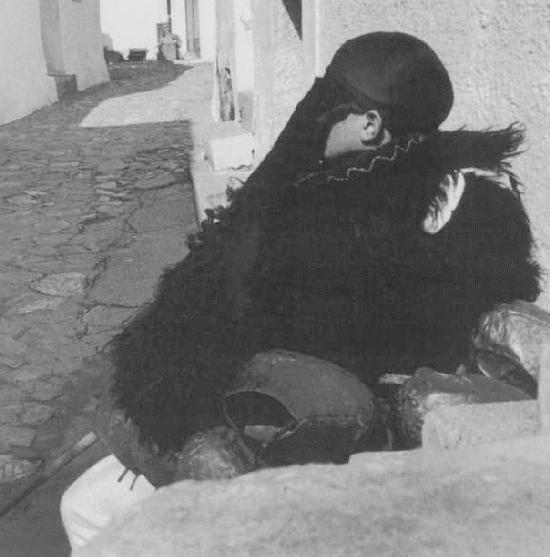
Figure 1.--A boy photographed in Skiathos island in 1984. He is wearing an improvised costume. Note the cowbells around his waist. |

|
Apokries is something roughly equivalent to Haloween and Mardi Gras. In America it is usually called Carnival. Apokries (Carnival) is a period of carefree merrymaking and entertainment. Apokries is associated with the cycle of Easter and Lent, which begins on 'Clean Monday'. The three preceding weeks are considered to be the Carnival period, and are a festive time in Greece. It is considered to be a transitional stage, preparing the faithful for Lent. Carnival is a
celebration of pre-Christian idolatrous and pagan customs. These of course are founded in classical Greek and Roman Empire gods and custims and are not related to the Christain Easter celebration which include prayer and fasting following Clean Monday. Apokries is a joyous celebration combining physical pleasures with the veneration of dead ancestoprs. The fancy dress costumes accirding to folk legend brings a year of good fortune to each village or town. Masked figures conduct strange dances. Their pacing and leaping are meant to recreate the passing of spirits through the upper world. The noise which accompanies Apokries, especially by the masked figures, is meant to wakeup the spirits of vegetation. Children usually wear costumes during apokries. The American cowboy and the Greek kilt costumes are among the most popular. The Mexican Zorro costume is also popular, presumably because of the American (Disney) television serialzation. The Ninja costume is also popular. Up until 1960s Greece, in remote villages and islands, Zorro and Cowboys sounded exotic. Television reached these areas in the early 1980s. In these areas during Aporkries or even in some other occasions they would improvise on costumes. Based on Christian but most of all Ancient pagan traditions they would create weird looling and sometimes scary costumes. These consisted of parts of traditional uniforms along with improvised masks. They
also used to hang a dozen or more big cowbells around their waist, making noise to scare away the evil spirits. These costumes were wearn by men and often boys but never by women or girls. These customs faded by the 80s and today few people follow them and it is done only for keeping the tradition
alive.
Navigate the Boys' Historical Clothing Web Site:
[About Us]
[Introduction]
[Activities]
[Biographies]
[Chronology]
[Clothing styles]
[Countries]
[Girls]
[Theatricals]
[Bibliographies]
[Contributions]
[FAQs]
[Glossaries]
[Images]
[Index]
[Links]
[Registration]
[Tools]
[Main HBC Topic page]
[Boys' Historical Clothing Home]
Navigate the Boys' Historical Clothing Belgin pages:
[Return to the Main Greek country holiday page]
[Return to the Main Greek country page]
[Greek choirs]
[Greek folk costumes]
[Greek movies]
[Greek royals]
[Greek schools]
[Greek youth groups]
